 |
All Saints', Wrington
|
 |
 |
All Saints', Wrington
|
 |
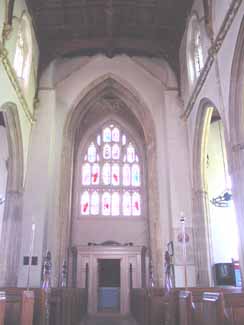 |
|||||||||||||||||||||||||||||||||||||||||
| Entering the church one is immediately struck by the height and the impressive dimensions. The nave is short, but this is offset by the unusual design by which a member of each pier is carried up to bear, between the clerestory windows, angels carrying the timber support of the roof. | |||||||||||||||||||||||||||||||||||||||||
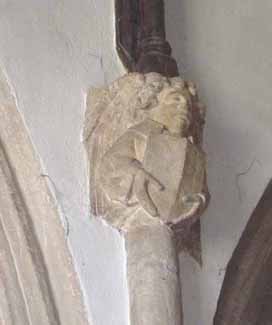 |
|||||||||||||||||||||||||||||||||||||||||
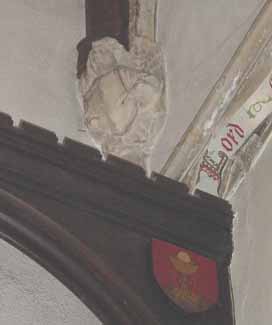 |
|||||||||||||||||||||||||||||||||||||||||
| The fine ceilings in the nave and aisles should be noted and also the delicate carving of the small capitals of the arcade piers. The whole arrangement gives a striking sense of lightness and dignity. |
|||||||||||||||||||||||||||||||||||||||||
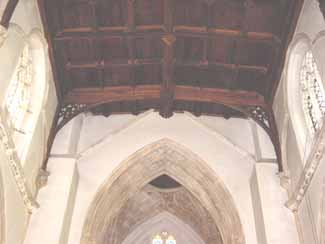 |
|||||||||||||||||||||||||||||||||||||||||
| The tower arch is lofty and there is fine fan vaulting in the tower ceiling and panelling in the tower arch. | |||||||||||||||||||||||||||||||||||||||||
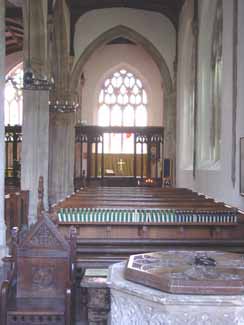 |
|||||||||||||||||||||||||||||||||||||||||
| The North and South aisles, both of which extend for approximately half the length of the chancel, end in chapels which are arched from the nave and chancel. | |||||||||||||||||||||||||||||||||||||||||
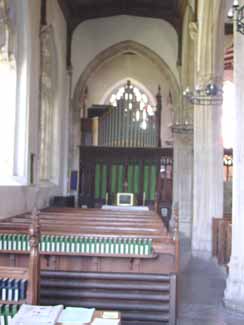 |
The South chapel, ( which is now known as the Lady Chapel), is that of St. Nicholas. It was cleared of pews and furnished with an Altar in 1925. | ||||||||||||||||||||||||||||||||||||||||
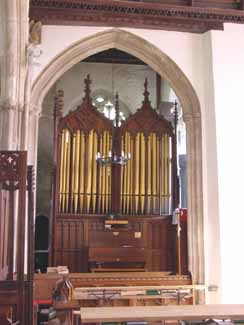 |
|||||||||||||||||||||||||||||||||||||||||
| That on the North, the Lady Chapel, is at present almost entirely filled by the organ which was placed in this position in 1880, when the instrument was improved and enlarged. All Saints was without an organ from the 17th century until the restoration of the church in 1859, when one was placed at the west end of the building. |
|||||||||||||||||||||||||||||||||||||||||
|
The Victorian restoration of 1859 saw many changes made to the interior of the building. The rough walls, always thickly coated with limewash until this date, were plastered. An entry in the Churchwardens Accounts for the year 1652, one of many referring to decoration, refers to the church being "whytelymed " for the sum of £ 1-1-Od. |
|||||||||||||||||||||||||||||||||||||||||
| The gallery across the tower arch, constructed "for the accommodation of a first and second flute, and the small boys who sing", was swept away. Also lost at the restoration were the high, square backed pews and " A group of private apartments, inclosed with red curtains, something like the dinner boxes of a city chop-house". (The "Church-Goer " 1851). The church, before 1859, was "full of the usual cumbrous traces of the village carpenter". | |||||||||||||||||||||||||||||||||||||||||
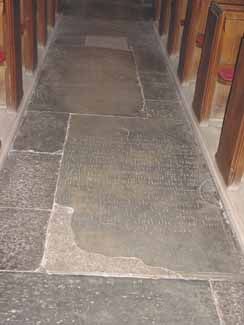 |
During the restoration tiles were laid in the chancel, obliterating a number of old tombstones, and a quantity of stained glass was inserted into the windows. | ||||||||||||||||||||||||||||||||||||||||
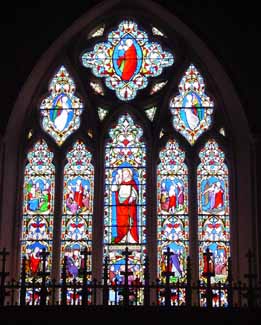 |
|||||||||||||||||||||||||||||||||||||||||
| The East window of the chancel depicts "The Good Shepherd" and was the gift of the then Rector, the Rev. John Vane. | |||||||||||||||||||||||||||||||||||||||||
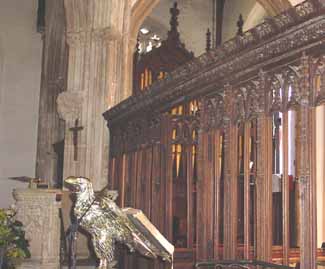 |
The 16th century oak screen almost became a victim of the 'Victorian 'restorers', and was only saved by the intervention of the Rector. | ||||||||||||||||||||||||||||||||||||||||
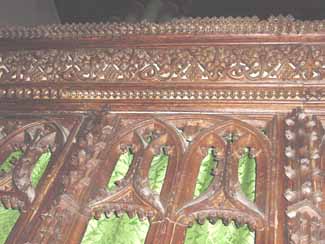 |
|||||||||||||||||||||||||||||||||||||||||
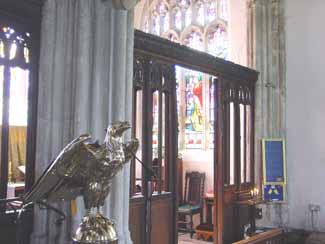 |
|||||||||||||||||||||||||||||||||||||||||
|
This beautiful carved screen, which is comparatively complete up to the head beam over the lights, separates the chancel and chapels from the nave and aisles. It extends the whole width of the church. |
|||||||||||||||||||||||||||||||||||||||||
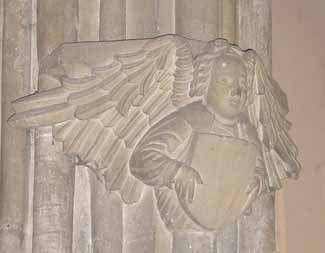 |
|||||||||||||||||||||||||||||||||||||||||
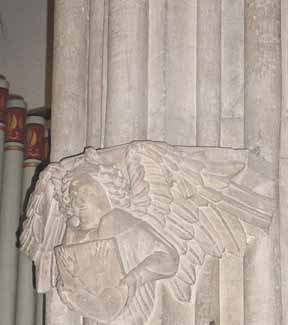 |
|||||||||||||||||||||||||||||||||||||||||
| The two angel corbels, on the West face of the piers of the chancel arch, formerly carried the bressummer or beam on which rested the Western section of the gallery. Access to the loft was by way of a staircase carefully hidden in the North wall, behind the screen. | |||||||||||||||||||||||||||||||||||||||||
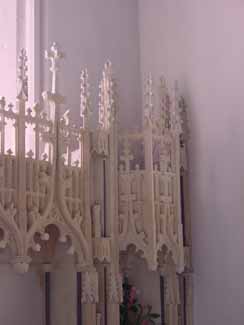 |
|||||||||||||||||||||||||||||||||||||||||
|
The Reredos, of Caen stone, against the East wall of the chancel, is Neo Gothic in style, and was designed by Sir Charles Barry in 1832. |
|||||||||||||||||||||||||||||||||||||||||
 |
|||||||||||||||||||||||||||||||||||||||||
| The Perpendicular Font, probably contemporary with the nave, has an octagonal bowl which is decorated with the demi figures of angels who hold a scroll | |||||||||||||||||||||||||||||||||||||||||
 |
|||||||||||||||||||||||||||||||||||||||||
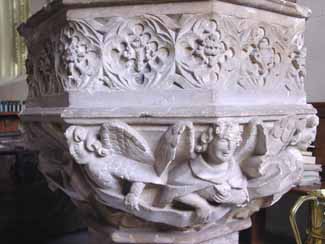 |
|||||||||||||||||||||||||||||||||||||||||
|
There is an upper band of finely worked quatrefoil design. |
|||||||||||||||||||||||||||||||||||||||||
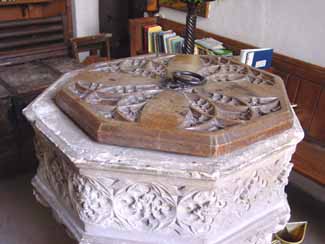 |
|||||||||||||||||||||||||||||||||||||||||
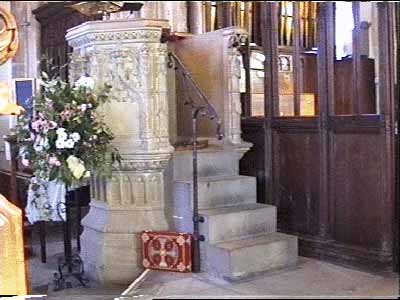 |
|||||||||||||||||||||||||||||||||||||||||
|
The Pulpit, of Caen stone, was placed in the church at the Victorian restoration. Its style is, as Pevsner states, "Typically High Victorian". |
|||||||||||||||||||||||||||||||||||||||||
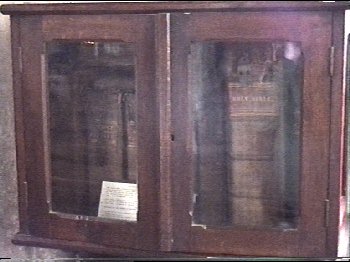 |
|||||||||||||||||||||||||||||||||||||||||
|
The Chained Library has now been moved from the chancel desks to a case at the West end of the North aisle. The books were given to the church by a former Rector, the Rev. Francis Roberts, and it is recorded that the Churchwardens of the day paid 2s-0d for chains and clasps to secure them. |
|||||||||||||||||||||||||||||||||||||||||
| The Rev. G. M. Ashdown, (Rector 1890-1925), discovered the books heaped in a corner under the tower. They had been considerably damaged by souvenir hunters, and to prevent further damage they have now been placed in their present position. | |||||||||||||||||||||||||||||||||||||||||
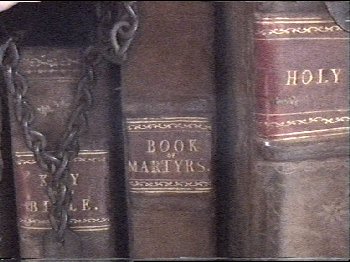 |
|||||||||||||||||||||||||||||||||||||||||
|
The chained books consist of The Holy Bible, 1617; Foxe's Book of Martyrs, 1618; The Key to the Bible, by Francis Roberts; God's Holy Covenants, by Francis Roberts, 1657 ; Apology for the Church of England and A Defence of the Apology, by J.Jewel, 1571. |
|||||||||||||||||||||||||||||||||||||||||